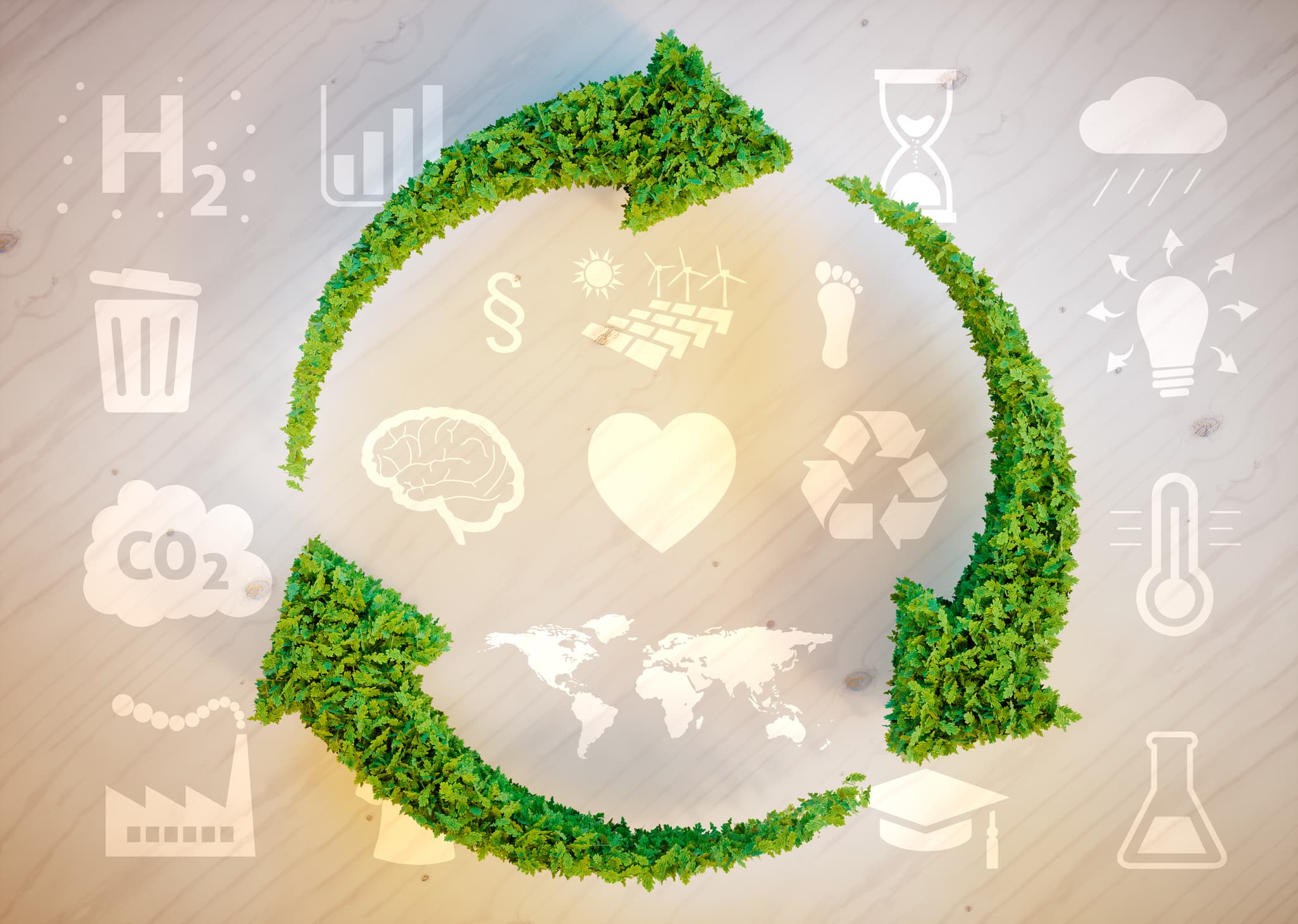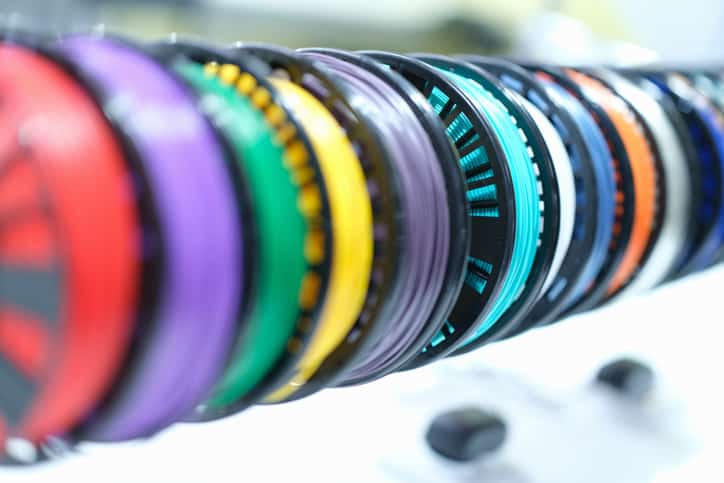3D Printing and Recycled Materials
3D Printing is a fast-growing technology; many materials are recyclable. Measures are required to capture these materials for reuse. Learn more now!
Introduction to 3D Printing and Recycled Materials
The 3D printing industry utilizes a variety of materials, but it is estimated that less than 10% of these materials are currently recycled. There are recyclable materials for use in 3D printing, primarily thermoplastics. The opportunity exists for the 3D printing industry to become even more sustainable, with projections that 40-60% of 3D printed items can be recycled.
This article discusses 3D Printing and Recycled Materials, Eco-Friendly Filament, and 3D Printing from Recycled Materials. …….

What is Eco-Friendly Filament?
Eco-friendly 3D printing filament is made from sustainable materials. These materials are biodegradable and do not require the use of hazardous chemicals. In addition, they are also renewable and can be recycled. These recyclable filaments include:
- PLA (Polylactic Acid): PLA is a bioplastic derived from renewable resources like cornstarch, sugarcane, and tapioca roots. It is a recyclable material that can be broken down and reused.
- PETG (Polyethylene Terephthalate Glycol-modified): PETG is a recyclable thermoplastic that can be recycled into new filaments, making it an excellent choice for eco-friendly 3D printing.
- PC-ABS (Polycarbonate-acrylonitrile butadiene styrene): PC-ABS is a recyclable blend of two plastics, ABS and Polycarbonate. It is an environmentally friendly and durable material that can be recycled.
- Nylon: Nylon is a recyclable thermoplastic that has a high strength-to-weight ratio. It is commonly used for 3D printing because it is strong and lightweight.
- HIPS (High Impact Polystyrene): HIPS is an amorphous thermoplastic material used in lower heat applications. It is categorized as a standard material and offers ease of processing, high strength, and stiffness.
- PP (Polypropylene): Polypropylene (PP) is one of the most commonly used thermoplastics in the world.
- PVA (Polyvinyl Alcohol): Poly is a water-soluble synthetic polymer. It has the idealized formula [CH₂CH]ₙ. It is used in papermaking, textile warp sizing, and as a thickener and emulsion stabilizer in 3D printing.
- TPU (Thermoplastic Polyurethane): Thermoplastic polyurethane (TPU) is a melt-processable thermoplastic elastomer with high durability and flexibility. It has the characteristics of both plastic and rubber and thus exhibits properties like durability, flexibility, and excellent tensile strength.
- Metal-based Filaments: Metal-filled filaments contain finely ground metal powder such as Copper, Bronze, Brass, and Stainless Steel. The percentage of metal powder infused in each filament can vary. This metal powder makes the filament much heavier and often more robust than standard plastics.
- BambooFill: BambooFill consists of 80% biodegradable PLA filament and 20% recycled bamboo fibers. BambooFill provides a light, sturdy, bamboo-like feel that could be used for many 3D printing applications.
- WoodFill: Wood-based filaments are typically a composite that combines a PLA base material with wood dust, cork, and other powdered wood derivatives. Typically, the filament consists of around 30% wood particles.
- Paper Pulp: Paper pulp is mixed with a natural binder for 3D printing. That slightly viscous pulp solution is pumped through a tube and then deposited on the print bed, just like any other 3D printer.
- Plant-Based Filaments: Many plant-based filaments have been recently developed, including soy-based, algae-based, and seaweed-based materials.
There are two basic types of plastics, thermosets, and thermoplastics. Thermoplastics can be melted and reformed. Thermoplastics do not form chemical bonds when curing, making them re-moldable and recyclable. Thermoset plastics are cured through photopolymerization processes with ultraviolet light. Thermosets cannot be melted and reshaped by heating once they are solidified. Thermosets strengthen when cured but form chemical bonds that make them impossible to remelt. The 3D printing sector is transitioning towards more thermoplastic and other recyclable materials.
Thermoset Materials:
- Melamine
- Epoxy
- Polyester
- Silicone
- Urea-formaldehyde
- Polyurethane
- Polytetrafluoroethylene (PTFE)
- Polyvinylidene fluoride (PVDF)
Thermoplastic Materials:
- ABS
- Acrylic (PMMA)
- Polyvinyl chloride (PVC)
- Nylon
- Polypropylene (PP)
- Polycarbonate (PC)
- Acetal Copolymer Polyoxymethylene (POM-C)
- Acetal Homopolymer Polyoxymethylene (POM-H)

3D Printing from Recycled Plastics, Building Materials, and More
3D printing is a revolutionary technology that has the potential to revolutionize many industries. As 3D printing becomes more advanced, it is becoming increasingly possible to print objects from recycled materials, such as plastics, building materials, and more. Using recycled materials for 3D printing is a great way to reduce waste and environmental impact while creating unique, custom objects.
Recycled plastics are some of the most popular materials used for 3D printing. Many companies now offer 3D printing services that use recycled plastics to create custom objects. This is a great way to reduce the amount of plastic waste in landfills while still creating custom objects. Building materials such as concrete and wood can also be used for 3D printing. Companies are offering 3D printing services that use recycled building materials to create custom objects. This is a great way to use materials that would otherwise be thrown away while still creating unique objects.
In addition to plastics and building materials, other materials, such as metals, wood products, and plant-based materials, can also be used for 3D printing. Overall, 3D printing from recycled materials is a great way to reduce waste and environmental impact while creating unique, custom objects. As 3D printing continues to become more advanced, the possibilities are endless.
Failed 3D prints account for more than 80% of 3D printing waste. Such failures can be caused by many reasons – from poor-quality filament and bed adhesion issues to slicing errors and hardware failures. Recyclability of failed 3D prints is an opportunity since the two most popular 3D printer filaments, ABS and PLA, aren’t recycled by most curbside municipal recycling centers.
The problem is that under the ASTM International Resin Identifier Codes, both ABS and PLA are classified as Type 7, or “Other,” which is not typically processed by municipal programs. As a result, we can’t throw failed prints into the recycling bin and expect them to be recycled.
Polypropylene (PP) filament isn’t commonly used for 3D printing as its semi-crystalline nature causes it to warp significantly while cooling. For the brave few that print with PP, it’s recycled in some municipalities.
Almost every other type of printer filament (including nylon and polycarbonate) are also classified as Type 7, like ABS and PLA, so typical plastic recycling plants don’t usually process them. As such, recycling facilities will require additional resources to capture these materials and improve the overall environmental sustainability of the 3D printing sector.
Get multiple quotes for your parts in seconds
